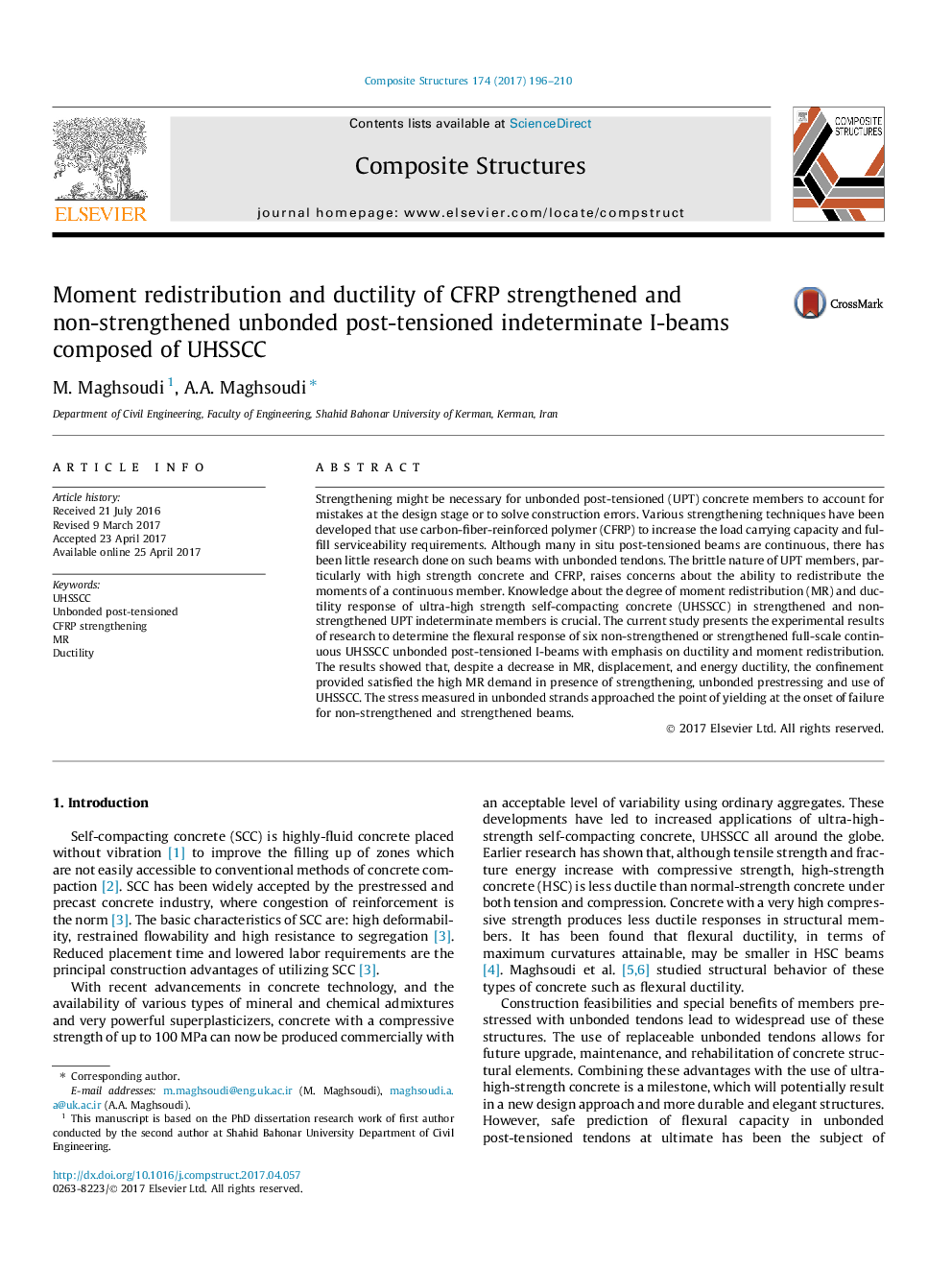| Article ID | Journal | Published Year | Pages | File Type |
|---|---|---|---|---|
| 4912004 | Composite Structures | 2017 | 15 Pages |
Abstract
Strengthening might be necessary for unbonded post-tensioned (UPT) concrete members to account for mistakes at the design stage or to solve construction errors. Various strengthening techniques have been developed that use carbon-fiber-reinforced polymer (CFRP) to increase the load carrying capacity and fulfill serviceability requirements. Although many in situ post-tensioned beams are continuous, there has been little research done on such beams with unbonded tendons. The brittle nature of UPT members, particularly with high strength concrete and CFRP, raises concerns about the ability to redistribute the moments of a continuous member. Knowledge about the degree of moment redistribution (MR) and ductility response of ultra-high strength self-compacting concrete (UHSSCC) in strengthened and non-strengthened UPT indeterminate members is crucial. The current study presents the experimental results of research to determine the flexural response of six non-strengthened or strengthened full-scale continuous UHSSCC unbonded post-tensioned I-beams with emphasis on ductility and moment redistribution. The results showed that, despite a decrease in MR, displacement, and energy ductility, the confinement provided satisfied the high MR demand in presence of strengthening, unbonded prestressing and use of UHSSCC. The stress measured in unbonded strands approached the point of yielding at the onset of failure for non-strengthened and strengthened beams.
Keywords
Related Topics
Physical Sciences and Engineering
Engineering
Civil and Structural Engineering
Authors
M. Maghsoudi, A.A. Maghsoudi,
